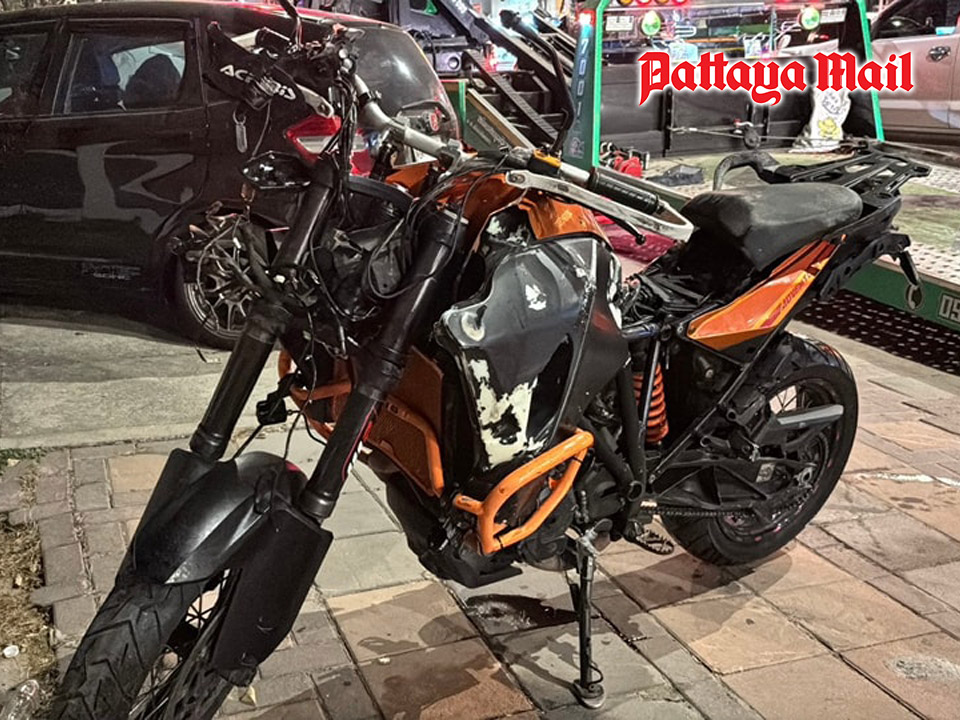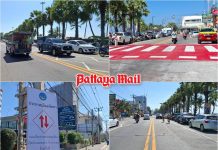
PATTAYA, Thailand – Pattaya, Thailand, known for its vibrant tourism and beach destinations, is now facing an alarming rise in reckless motorcycle racing, particularly involving powerful big bikes. In recent months, reports of high-speed chases, dangerous maneuvers, and fatal accidents have become more frequent, raising concerns among residents and tourists alike. The once laid-back atmosphere of the city streets has been replaced by what some are calling “lethal racing tracks” for motorcyclists, often causing irreversible harm.
Big bikes, which are popular in Pattaya due to their ability to navigate through heavy traffic and the thrill they provide, have become a growing safety concern. Riders, especially those from the local and tourist communities, frequently take to the roads at night, showing off their speed on busy streets such as Beach Road, Sukhumvit, and along the coastal routes. The sounds of revving engines and screeching tires have become a regular occurrence, particularly on weekends, when large groups gather for impromptu races.
This behavior, however, is not without consequences. Reckless driving has led to several tragic incidents, with riders losing control of their bikes, crashing into pedestrians, or colliding with other vehicles. Onlookers have also reported the dangerous conditions posed by riders performing stunts, weaving in and out of traffic at terrifying speeds, often endangering other road users.
But the bigger question remains: who should be responsible for this growing issue?
Local Authorities and Law Enforcement: The first point of responsibility lies with local authorities and law enforcement. While Pattaya has traffic laws in place, the enforcement of these laws remains a significant challenge. Officers are often overwhelmed, and some have been criticized for not taking sufficient action against dangerous riders. This lack of enforcement allows dangerous behavior to flourish unchecked. To address the issue, stricter patrols, surveillance, and harsher penalties for offenders are necessary. Additionally, setting up checkpoints for alcohol and speed-related offenses could discourage reckless riders.
Big Bike Owners and Riders: The owners and riders of big bikes also share a considerable portion of the responsibility. While many big bike enthusiasts are responsible and follow traffic rules, a growing number are engaging in reckless behavior. Riders must be held accountable for their actions, and they need to be educated about road safety. Initiatives like awareness campaigns, stricter licensing requirements, and mandatory safety training could help curb some of the more dangerous behavior.
Tourism Industry: The tourism sector, especially the motorcycle rental businesses, also plays a crucial role in the problem. Many tourists rent big bikes without fully understanding the risks involved. Although rental companies are required to provide safety gear and warn riders about road conditions, the lack of a solid regulatory framework means that some companies prioritize profits over safety. Ensuring that rental agencies only provide bikes to those with proper licenses and safety training could mitigate the problem.
Road Infrastructure and City Planning: Pattaya’s road infrastructure and city planning also contribute to the issue. The city’s roads are not designed to handle high-speed racing, and the layout of the roads, along with the presence of tourists unfamiliar with local traffic patterns, increases the potential for accidents. More clear road signage, designated racing areas (away from populated zones), and better urban planning could go a long way in reducing the risk of accidents.
In conclusion, Pattaya’s streets have become dangerous for both locals and tourists, and the surge in big bike racing presents a real threat. It’s clear that responsibility falls on multiple shoulders — local authorities, motorcycle riders, the tourism industry, and city planners — all must work together to make the streets safer for everyone. Only through a combined effort will Pattaya be able to curb the growing problem of lethal racing tracks and ensure the safety of its visitors and residents.










